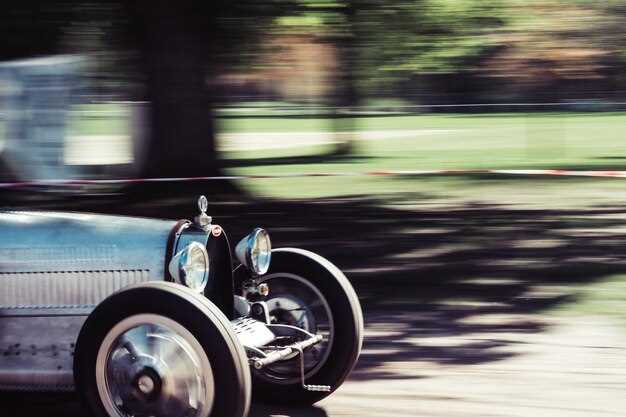
Audi’s history in racing is a testament to the brand’s relentless pursuit of perfection and innovation. Over the decades, Audi has carved out a prominent place in the motorsport world, with its groundbreaking technologies and engineering prowess transforming the racing landscape. Their journey began in the dusty backroads of rally racing, where they set stunning benchmarks with the revolutionary Quattro system, enabling them to dominate competitions with unmatched traction and control.
The story of Audi racing is not solely confined to rallying; it extends into the legendary realm of endurance racing, particularly at the 24 Hours of Le Mans. Here, Audi’s commitment to pushing the boundaries of performance culminated in a series of historic victories that would define the brand’s legacy. Through relentless innovation and strategic engineering, Audi established itself as a powerhouse in the endurance racing scene, conquering the prestigious race multiple times and setting records that still stand today.
This article delves deep into Audi’s rich racing heritage, exploring the pivotal moments and technological advancements that have propelled the brand to the heights of motorsport success. From the rally stage to the iconic Le Mans track, Audi’s history is a narrative of ambition, creativity, and an unyielding quest for victory.
How Audi Revolutionized Rallying with Quattro Technology

Audi’s entry into the world of rallying marked a significant turning point in motorsport history. The introduction of Quattro technology in the early 1980s fundamentally changed the dynamics of rally racing, establishing a legacy that would influence both competitors and manufacturers for decades to come.
Quattro, which translates to “four” in Italian, referred to Audi’s innovative all-wheel-drive system. Before its debut, rally cars primarily utilized rear or front-wheel drive, which often limited traction and performance on diverse terrains. Audi engineers recognized the potential for an all-wheel-drive system to enhance stability, handling, and acceleration, particularly on slippery surfaces such as gravel and snow.
The Audi Quattro made its competitive debut at the 1980 Monte Carlo Rally, where it quickly demonstrated its superiority. The combination of powerful turbocharged engines and the intelligent distribution of power to all four wheels allowed drivers to maintain control and speed in challenging conditions. This breakthrough not only led to immediate success for Audi but also set new standards in rally car design and engineering.
Over the years, Audi amassed numerous championships and accolades, cementing its status as a dominant force in motorsport. The brand’s history in rallying is defined by iconic cars like the Audi S1 and the sport Quattro, which combined cutting-edge technology with aggressive styling, creating a legendary image that still resonates with enthusiasts today.
Furthermore, the influence of Quattro technology extended beyond rallying. It paved the way for advancements in road car production, with all-wheel-drive becoming a desirable feature for performance vehicles across the automotive spectrum. Audi’s commitment to innovation solidified its legacy in both rallying and the broader automotive industry.
In conclusion, Audi’s pioneering use of Quattro technology not only revolutionized rallying but also reshaped automotive engineering standards. The success and impact of this system highlight Audi’s important role in the history of motorsport and its enduring legacy in performance automobile design.
Key Moments of Audi’s Success at Le Mans: A Detailed Timeline
1999: Audi made its debut at the Le Mans 24 Hours with the Audi R8R, marking the beginning of a remarkable chapter in racing history. The innovative design and engineering set the stage for Audi’s future dominance in endurance racing.
2000: Audi clinched its first victory at Le Mans with the R8, driven by the legendary trio of Tom Kristensen, Frank Biela, and Emanuele Pirro. This win solidified Audi’s legacy, establishing it as a formidable contender in endurance racing.
2001: Audi showcased the R8’s superiority by winning the race for the second consecutive year, further elevating its status in the racing world. This victory was characterized by an impressive performance, showcasing speed and reliability.
2002: With a third consecutive triumph at Le Mans, Audi continued to demonstrate its engineering prowess. The R8, known for its aerodynamic design and powerful performance, became an icon in motorsport history.
2004: Audi introduced the R8 LMP2, introducing a new level of technology to the race. The vehicle’s integration of innovative materials and designs reflected Audi’s commitment to advancing racing technology.
2006: The Audi R10 TDI made its debut, marking a historic moment as the first diesel-powered car to win Le Mans. This victory not only showcased Audi’s innovative spirit but also helped reshape perceptions of diesel technology in motorsport.
2008: Audi completed a remarkable feat by winning its eighth Le Mans title. The R10 TDI’s performance set a new benchmark for endurance racing, demonstrating the brand’s continued commitment to cutting-edge technology.
2011: Audi unveiled the R18 TDI, further pushing the boundaries of technology and performance. The vehicle’s unique design and hybrid technologies demonstrated Audi’s focus on sustainability and innovation in the racing arena.
2014: The Audi R18 e-tron quattro won the race, becoming the first hybrid vehicle to secure victory at Le Mans. This landmark moment highlighted Audi’s ability to blend performance with environmental responsibility.
2016: Audi made its final appearance at Le Mans, securing its 13th overall victory with the R18. This last triumph solidified Audi’s incredible legacy in the history of endurance racing, leaving an enduring mark on the sport.
The Impact of Audi’s Racing Legacy on Modern Automotive Engineering

Audi’s remarkable legacy in motorsport has significantly influenced contemporary automotive engineering, particularly through innovations derived from its rich history in racing. The brand’s commitment to performance and technology has set new benchmarks that have been integrated into consumer vehicles.
The pioneering use of quattro all-wheel drive technology in the Audi Quattro revolutionized the rally scene in the 1980s. This advancement not only provided better traction and handling on various surfaces but also paved the way for a generation of vehicles that prioritize stability and control, elevating safety standards across the automotive industry.
Additionally, Audi’s success at the 24 Hours of Le Mans introduced the concept of lightweight materials and aerodynamics into mainstream car design. The integration of carbon fiber and aluminum structures, initially developed for racing purposes, now helps in reducing weight and enhancing fuel efficiency in modern vehicles.
Furthermore, the brand’s focus on turbocharged engines and hybrid technologies has trickled down to the consumer market. Audi’s racing experience has led to the creation of powerful yet efficient powertrains, reflecting a shift towards sustainability without compromising performance.
In summary, Audi’s history in racing not only exemplifies excellence in competition but also serves as a catalyst for transformative advancements in automotive engineering. The principles and technologies developed on the racetrack continue to inspire innovations that shape the future of mobility.
